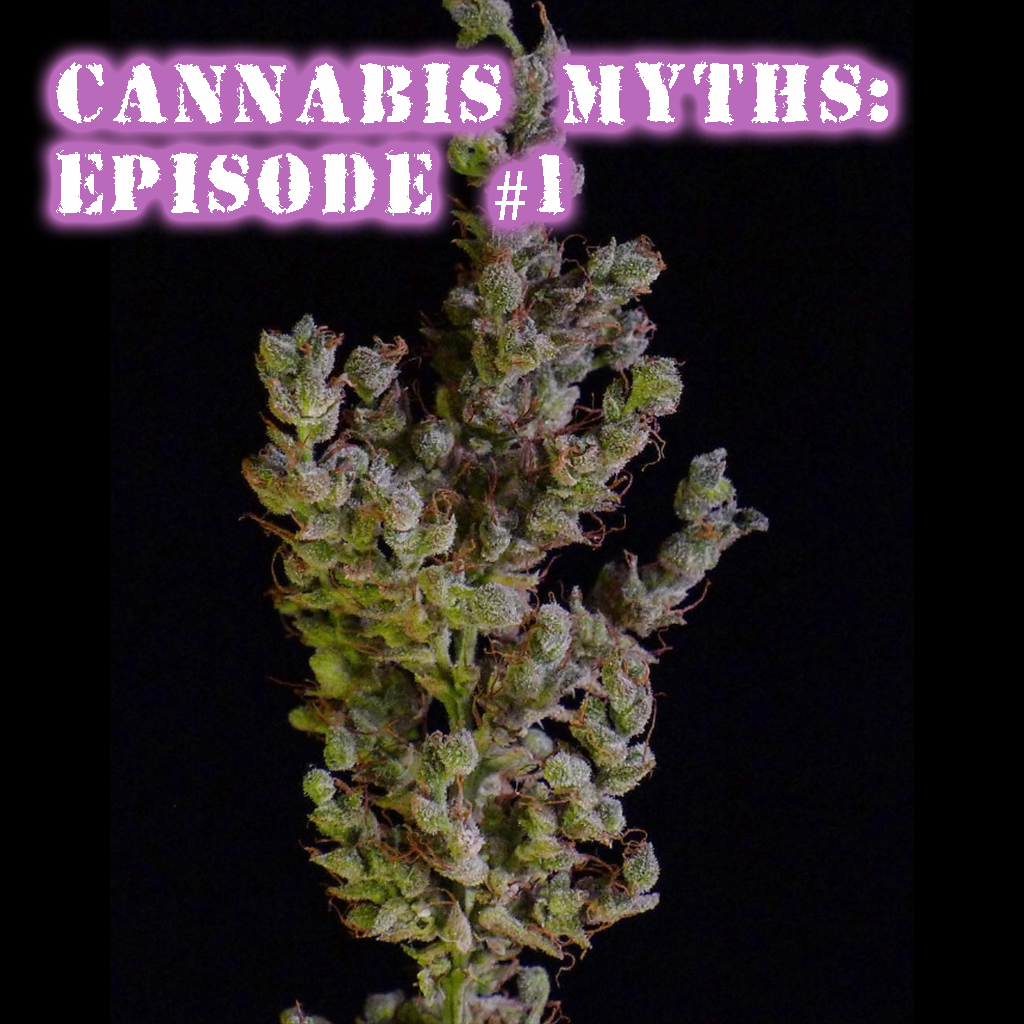CANNABIS MYTHS: EPISODE#1

This is one where I can see where it comes from. With all strains that populate the modern market, the product is hard, dense nugs. Denser, harder nugs are first and foremost determined by genetics, but not genetics alone – they are usually the byproduct of being grown under more optimal lighting and other optimised environmental conditions. When breeding, producing dense buds is often a plus sign, especially for indoor growers. We select for this trait among others like short flowering time or low nutrient requirement, because it means growers can pack more bud into the same amount of space with the same budget. Anything that increases the flower weight, cultivation area, cultivation time, or cultivation cost is invariably a key factor when it comes to breeding commercial varieties.
Unfortunately, this means that most of the average consumers will go our lives without ever experiencing, growing, seeing, or tasting a well grown true tropical sativa. (Side note: If you ever have an opportunity to, you should. The racing, soaring cerebral high is nothing like any so-called “Sativa” that you can get in a shop.)
Fig. 1: Strain – South Indian Destroyer, grown by Tonglensong Project, a very skilled and dedicated grower of sativa leaning and landrace genetics. Notice how spaced out and airy the flower is in comparison to conventional commercial flower (or hydro, as they call it in India).
Fig 2: Close up of the South Indian Destroyer strain grown by Tonglensong project. It might look sparse, but the cerebral potency of a well grown sativa like this is psychedelic in nature.
Even in a tropical legal market like Thailand, the indigenous environment for tropical sativas, you can only see them in just a few select dispensaries, but the buds have been poorly stored, poorly grown, or they’re just a poor genetic selection and not very strong or flavourful. Even if grown and selected well, the best buds from a high grade true tropical sativa are not going to be dense by dispensary standards. Unlike modern strains bred by humans for the purpose of producing the largest quantity of the most potent and tasty buds in the shortest possible time with the shortest possible financial inputs, tropical landraces evolved to survive in the sweltering heat and humidity of their tropical climate. Buds from these regions need to be fluffy, airy, and less dense so that they have airflow in between the bud structure to keep them from growing mildew and rotting in the humid, rainy environment. Unlike places like Europe, North America, and Russia, most tropical countries like Thailand consist largely of regions where it’s never cold and there’s more than enough sunlight all year. As a result, the original Sativa plants never had to be concerned about a frost coming in during the winter. Most of them go on to flower for anywhere from 12-24 weeks. They grow almost unmanageably huge and, because of the lack of relative bud density, produce lower quantities of flower per square metre. This is not good for commercial production. Plants that flower for four to five months, grow huge, and produce airy, fluffy buds are a huge waste of valuable and expensive electrical input and space for commercial growers.
Fig 3: The legendary strain known as Dr. Grinspoon, known for being notoriously long flowering and having very airy flowers with a soaring, long lasting, therapeutic high.
In that same five month timeframe, we could grow two back to back crops of dense, short flowering genetics and get a bigger yield with each of those harvests than we would have with the landrace sativa. The short flowering genetics come from the foothills of the Himalayas, Afghanistan, and parts of the Middle East, where plants had to finish flowering well before the frost hits; the end of October was a hard deadline. Plants that took longer than this were consumed by frost and were weeded out by survival of the fittest. Summers in these regions have usually been hot and dry, with a very low amount of rainfall and little humidity, if any. Plants had to hold on to and trap whatever moisture they could get. A tight, dense bud structure served the purpose best, preventing air flow and water loss through evaporation. The denser the nugs, the less room for airflow, and the less surface area for moisture loss. All of these traits – the fast flowering, the density of flowers, the ability to tolerate drought-like conditions – are all incredibly aligned towards commercial cultivation. Ever since the days of indoor cultivation becoming mainstream, they have always been the more dominant gene pool in modern mainstream Cannabis breeding. Most if not all the flowers we will see these days are dense.
This is going to sound controversial to a lot of people, but what I’m saying is that although density is ubiquitous in the industry, the lack of it does not have to point to poor quality buds at all. If you have a frosty, slightly less dense bud in front of you at a store and you like the smell, give it a shot. Especially for fans of Sativas. My personal priority in bud if I’m buying from a store is the smell and then the appearance. As a personal Sativa fan, sometimes I lean towards things like foxtails or hazy genetics in general. The appearance of a bud might get me to open a jar but the smell will get me to buy it. The density usually has little role to play in my decision. This one is certainly a myth. More density does not indicate higher quality.
